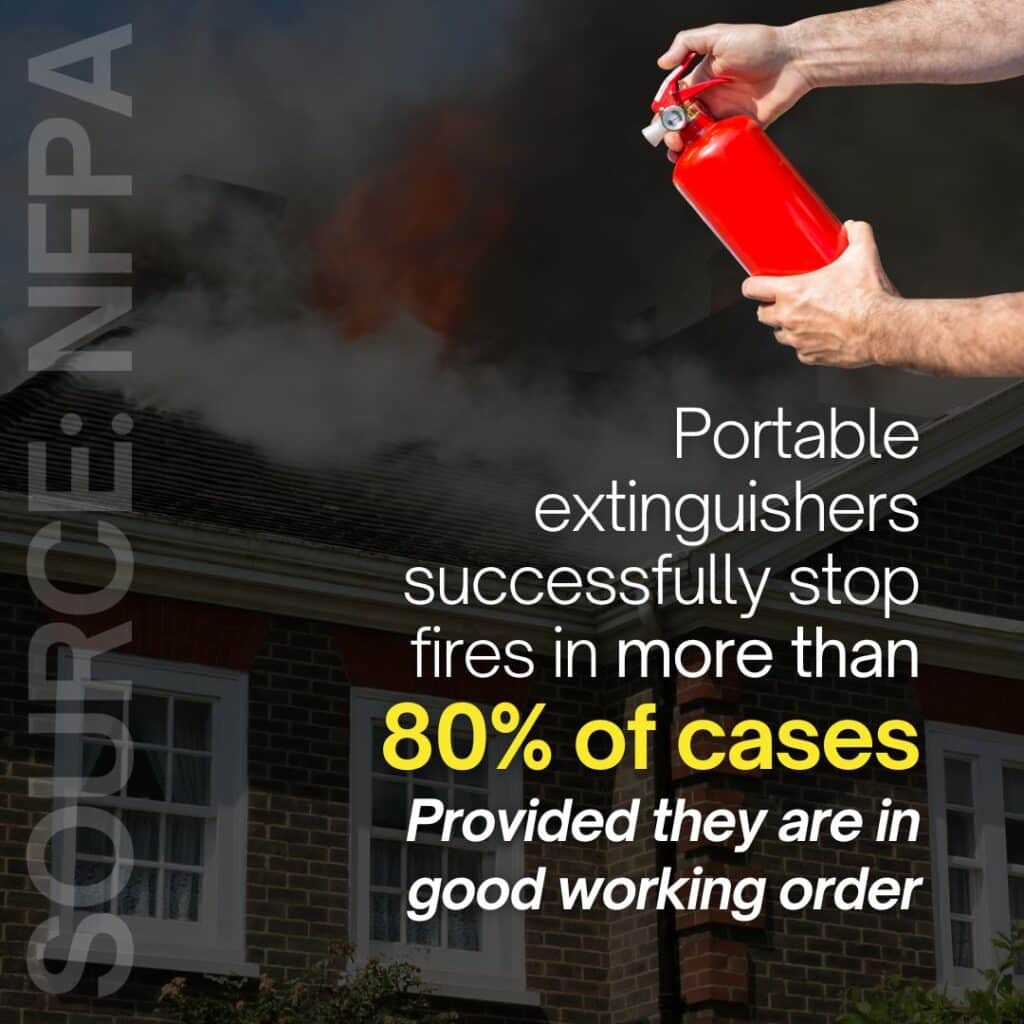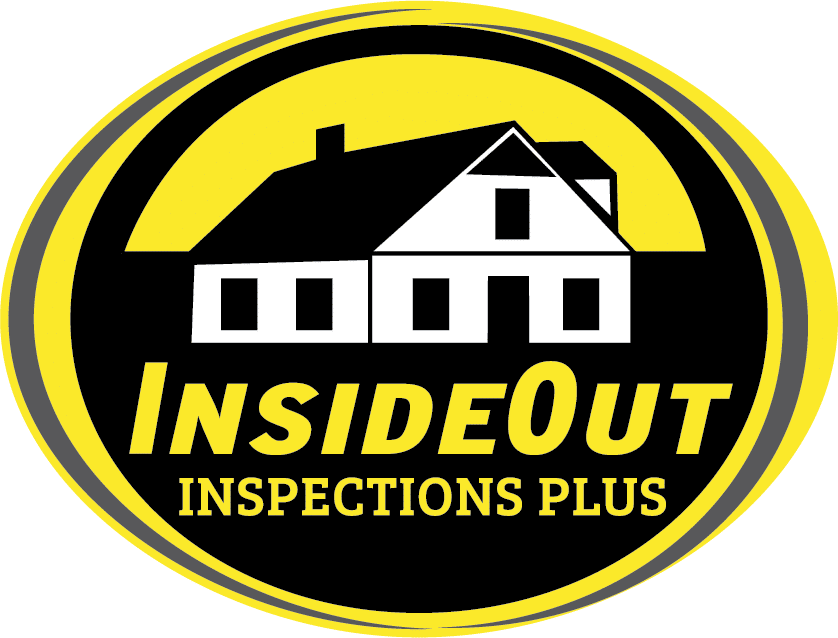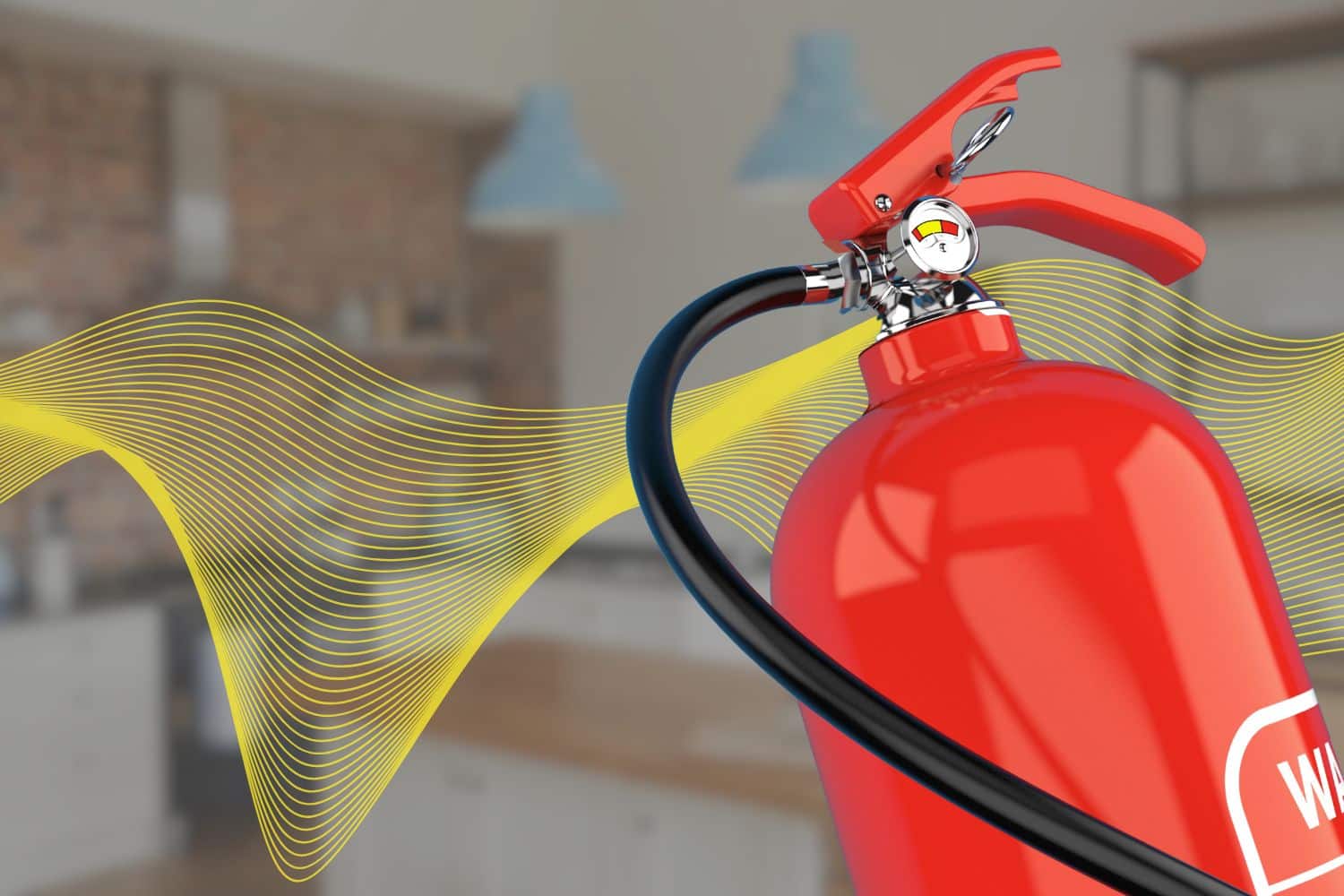You’re under contract for a new home, already picturing where the couch will go and filling your online cart with décor and furniture. A fire extinguisher and its associated maintenance? Probably not the first thing you’re adding.
But when was the last time you actually checked the one under your sink…do you even know that you have one? U.S. fire departments respond to more than 340,000 home fires every year, causing over $8 billion in property damage.
Many of those losses could be reduced or prevented entirely with working fire extinguishers and routine safety checks. That’s where home inspections come in.
A professional can spot missing or expired extinguishers and flag risky storage or electrical issues. Here’s what you should know about the care that falls in between.
Why Fire Extinguisher Maintenance Matters
The NFPA reports that portable extinguishers successfully stop fires in more than 80% of cases where they are used, provided they are in good working order.
But the same data shows that extinguishers fail to work in a noticeable number of emergencies due to lack of maintenance.
Common causes of extinguisher failure:
- Loss of pressure inside the cylinder
- Corrosion or rust weakening the canister
- Blocked nozzles from dust, grease, or debris
- Expired extinguishing agent or damaged seals
- Missing safety pins or tamper seals
Regular maintenance not only ensures your extinguisher works but also extends its lifespan and keeps it compliant with safety standards.
Types of Fire Extinguishers and Their Maintenance Needs
1. Dry Chemical Extinguishers
These are the most common in homes and small businesses. They require monthly visual inspections and periodic servicing by a qualified technician.
2. CO₂ Extinguishers
Often used in commercial or industrial spaces, these should be weighed periodically to check the CO₂ level and inspected for frost buildup around the valve.
3. Water or Foam Extinguishers
These need regular pressure checks and an inspection for leaks or corrosion.
Monthly Checks You Can Do Alone
NFPA standards recommend monthly visual inspections. These do not require professional tools, just your eyes and a few minutes.
Check for:
- Proper placement: The extinguisher should be in its designated location, unobstructed, and easy to reach.
- Pressure gauge: The needle should be in the green zone.
- Safety pin and seal: The pin should be in place, with the tamper seal intact.
- No visible damage: Look for dents, rust, cracks, or leaks.
- Hose and nozzle: Ensure they are free from blockages, dirt, or grease.
- Label legibility: Instructions and safety information should be clear and readable.
Record your inspection date on a tag or in a maintenance log. This is especially important for workplaces where OSHA compliance applies.
Annual Professional Maintenance
While monthly checks are essential, they do not replace professional servicing. An annual inspection by a certified fire equipment technician is recommended for both home and commercial extinguishers.
During a professional service, the technician will:
- Verify the extinguisher type and size are appropriate for your environment
- Check internal pressure with specialized equipment
- Inspect internal parts for corrosion or damage
- Replace worn or damaged hoses, seals, or pins
- Refill or recharge if necessary
- Update inspection tags or service records
According to the NFPA, some types of extinguishers require internal maintenance every 5 to 12 years, depending on the model.
This may involve completely discharging the extinguisher, inspecting the interior, and replacing the extinguishing agent.

Troubleshooting Common Fire Extinguisher Problems
The Pressure Gauge is Low
- Cause: Slow leakage of gas or agent, temperature changes, or long-term storage without servicing
- Solution: Have the extinguisher recharged or replaced immediately
Missing Pin or Seal
- Cause: Accidental removal, tampering, or improper storage
- Solution: Replace the pin and seal promptly, and have the unit inspected to ensure it is still fully charged
Damaged or Blocked Nozzle
- Cause: Dust, grease buildup, insects, or impact damage
- Solution: Clean the nozzle with a dry cloth and have it inspected for cracks or breaks
Related Questions Consider
Do Fire Extinguishers Expire?
Yes. Most have a lifespan of 5 to 15 years, depending on the type and maintenance history. Check the manufacturer’s label for the expiration date and replace expired units.
How Many Extinguishers Do I Need?
At minimum, one per floor, plus one in the kitchen, garage, and any workshop or utility area. For larger spaces, ensure there is an extinguisher within a 75-foot travel distance from any point.
Which Extinguisher Type is Right for My Home?
Most households benefit from a multi-purpose ABC extinguisher, which can handle ordinary combustibles, flammable liquids, and electrical fires.
When to Call a Professional
A home inspector won’t service or recharge a fire extinguisher, but they can spot issues that may put you at risk. Call Centex for a professional inspection if:
- You’re buying or selling a home and want extinguisher placement, accessibility, and visible condition reviewed as part of your safety evaluation.
- You want a full home safety check that also identifies other fire risks like faulty wiring, blocked exits, or flammable material storage.
- You’re unsure if your home meets current fire safety standards and want an unbiased assessment before bringing in a fire equipment technician.
In commercial settings, documented maintenance is often required by law, and a certified technician or inspector can ensure your records are complete.
Conclusion
Your fire extinguisher is only as good as its maintenance and last inspection. With monthly visual checks, annual professional servicing, and the manufacturer’s maintenance schedule, you make sure it’s ready to protect you when every second counts.
If you’re uncertain about the condition of your extinguisher or your overall home safety plan, schedule service with InsideOut Inspections Plus to identify risks and recommend steps to safety.


